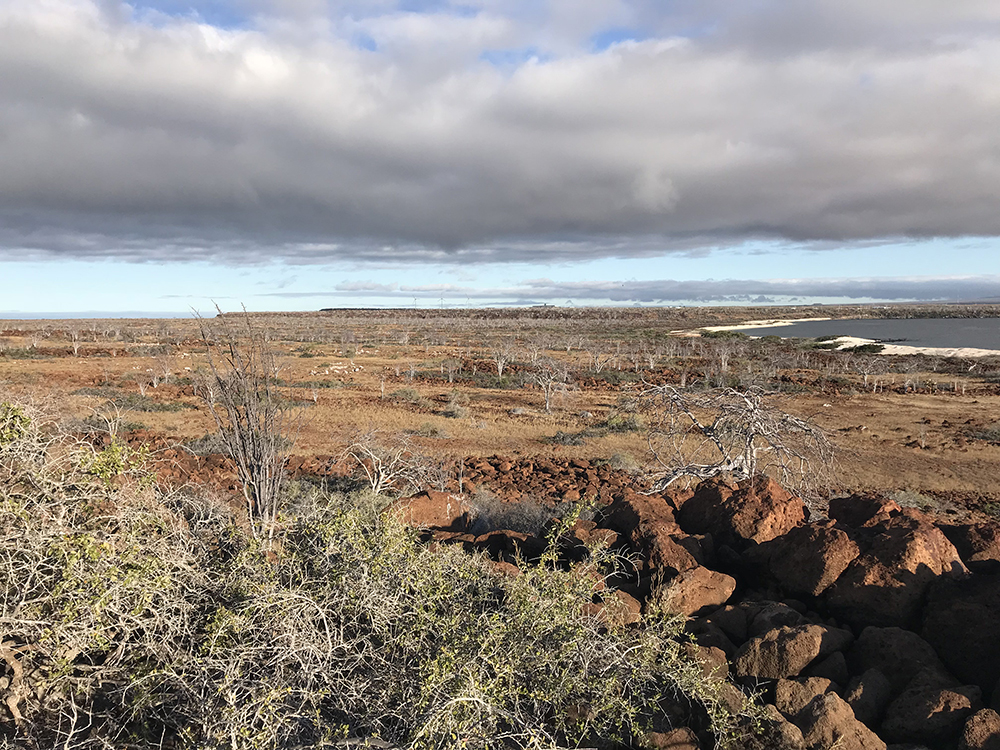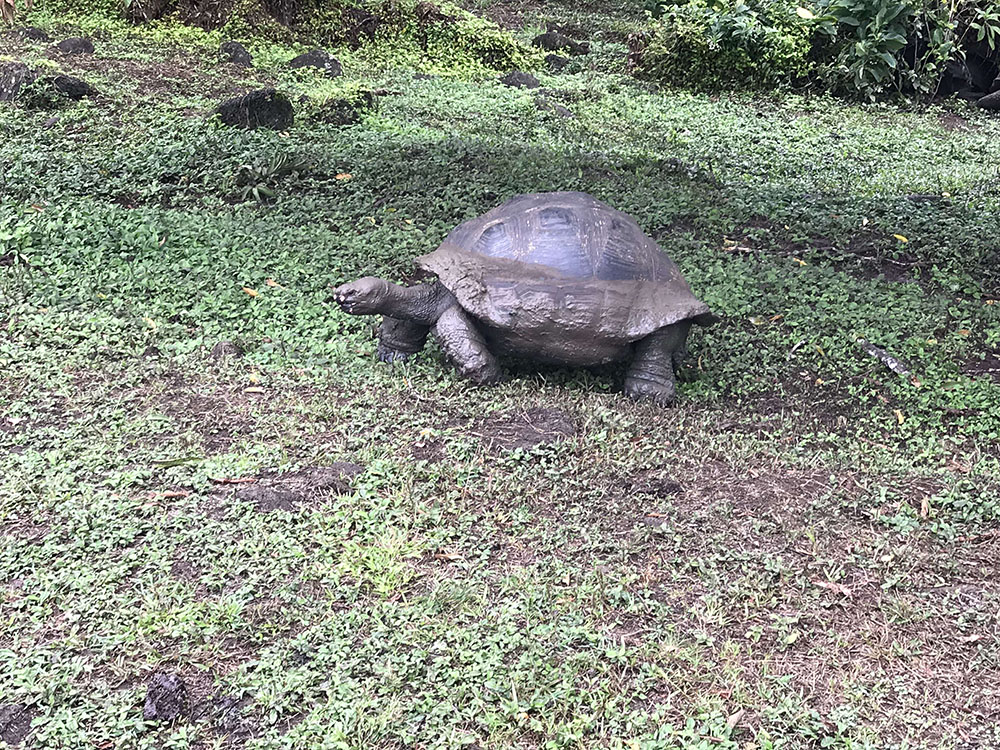
Snakes, iguanas and more… Part 1
Euan Moncrieffe was lucky to volunteer with one of our partners, Luis Ortiz-Catedral, on some of his projects in Galapagos in 2019. Here is the first of two blogs that he wrote for us about his experiences working with snakes, iguanas and more.
On July 15 2019, I flew off to the Galapagos Archipelago to assist Dr Luis Ortiz-Catedral and his team on the research of land iguanas, Floreana mockingbirds and, most notably, Galapagos racer snake species. My trip began at London Heathrow airport where I flew to Bogota, a truly incredible city in terms of location and history. After Bogota, it was simply a hop, skip and jump via Guayaquil to the rich red lands of Baltra. The island was my first real taste of the Galapagos and the landscape surrounding Seymour airport was fascinating. It was incredibly dry and full of so many different kinds of cacti and shrub. I had never been to a place that contrasted so much with the forests of Scotland and it was ironically refreshing.

Baltra © Euan Moncrieffe
Not too long after landing I met Enzo Rodriguez-Reyes, a PhD student who was researching the Floreana mockingbird and their behaviours within groups. I also met Dr Michelle Roper, who was also studying for a PhD at Massey University on bird behaviours and, more specifically, the differences between the song of male and female New Zealand bellbirds. Michelle was primarily assisting Enzo with his research on Floreana. After a short meet and greet we took a bus from the airport to the port were a boat would take us to Santa Cruz. I vividly remember travelling through Santa Cruz to Puerto Ayora for the first time. There was a great contrast between the arid forests in the south of Santa Cruz and the lush green forests of the ’highlands’. Enzo told me all about his work with the mockingbirds and also about an invasive black moss. I was keen to learn more and it wasn’t long until Harrison Sollis or “Harry”, the final member of Luis’ team arrived. Harry was working under Luis assisting with the Galapagos racer project and more specifically researching the colour variation, ecology and general behaviour of a Pseudalsophis dorsalis population on North Seymour as part of a Master’s degree. For the majority of the time, I worked closely with Harry on his project and loved every bit of it.
Paradise in Perspective
When not in the field, I was given the opportunity to discover Galapagos and Santa Cruz from a tourist’s perspective. On my second day in Puerto Ayora, I travelled with Harry and Enzo to Las Grietas, a narrow canyon filled with crystalline water. The surprisingly cold water was packed with green parrotfish and vibrant blue eels gliding in harmony with the canyon walls. Another hotspot is Tortuga Bay, a must-see sight. As we moved along the beach, we were lucky enough to come across a sea turtle hatchling migrating towards the sea. It scuttled between the giant marine iguanas, standing proud like terracotta statues, and was followed eerily by an escort of Darwin’s finches. Around the corner of Tortuga Bay sits a much quieter bay surrounded by mangrove limbs that created an ideal nursery for young white and blacktip sharks. These young sharks are a sight I would highly recommend to anyone, shark lovers or not. Another good spot for sharks is down by the harbour on the Puerto Ayora jetty. It is mesmerising to watch them drifting endlessly through the water.

Shark nursery, Tortuga Bay © Euan Moncrieffe
Just before we embarked on our second expedition, Harry and I set off for the highlands to see the volcano craters and the Galapagos giant tortoise farm. The tortoises stay in truly opulent green fields populated with guava trees that supply their seemingly unquenchable appetite. After indulging themselves, the tortoises haul themselves towards the thick mud pits scattered around the farm. The most memorable moment was when we drove down the road from the farm; emerging over the hill came a magnificent tortoise carrying a mighty dome on its back. I felt as if I was in Jurassic Park seeing a dinosaur for the first time. After our brief encounter, we drove on down to the lava tunnels. The tunnels were passages through the side of the hill formed during Santa Cruz’s birth. I was amazed at how smooth the walls were and how cleanly the lava had cut the tunnels.

Galapagos giant tortoise, Santa Cruz © Euan Moncrieffe
Just before our third expedition, Harry, Michelle and myself took off to Garrapatero Beach on the east coast. The trek to the beach was matched only by the mighty hike to Tortuga Bay. Our early start rewarded us with a lone P. steindacreny snake bathing in the rising sun. Harry was quick to retrieve the snake but was taught a sharp lesson when the snake deposited a particularly nasty musk onto his hand. Garrapatero was a beautiful beach packed with finches. We had brought biscuits and as we lay down to bask in the sun we were soon surrounded by hordes of the flying menaces. After our bird battle on the beach, we took off to search for the native flamingos that dwell in a marsh nearby. Unfortunately, the flamingos weren’t home; instead we were presented with a magnificent great egret that I hastily snapped a picture of before it flew off into the distance.
